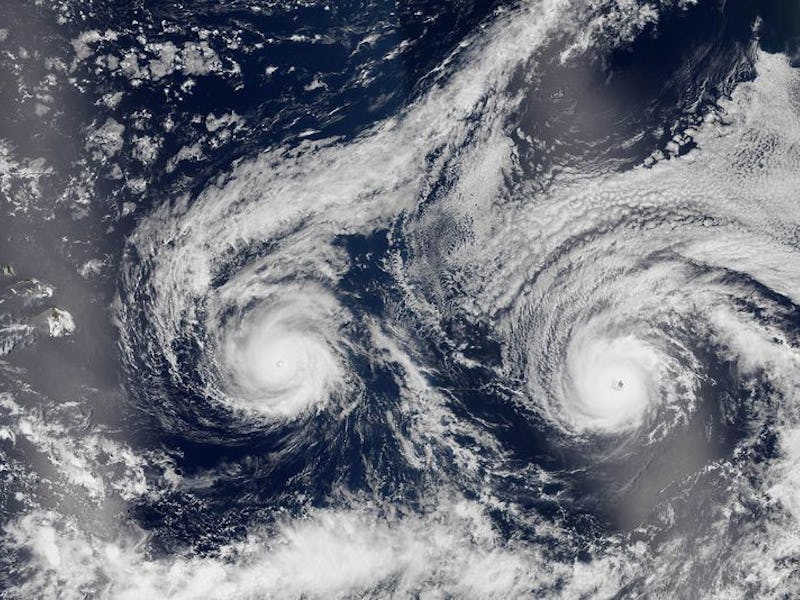Hawaiian Hurricane Might (Briefly) Reverse Climate Milestone
This is symbolic AF.

Hawaii has seen more than its fair share of wild weather this week. Hurricanes Lester and Madeline — the latter has since been downgraded to a tropical depression as it passed closer to Hawaii — represent an unprecedented double whammy for an island chain that historically has been too far north to have to deal with many hurricanes. And while global warming is likely a major driver of the two storms, Madeline may actually have dropped local carbon dioxide levels enough to reverse one of the world’s most famous climate thresholds — though only in the absolute most technical of senses.
Hawaii is important in climate science because it’s home to the Mauna Loa Observatory, which has been continuously tracking levels of carbon dioxide in the atmosphere since 1958. It was then that scientist Charles David Keeling discovered that, while the levels did fluctuate from day to day and season to season, the overall levels were always, always increasing, from 315 parts per million to just over 400 ppm since 2014. That’s more than two additional parts per million each year. The graph of that steady, inexorable increase is called the Keeling Curve, and it’s one of the most straightforward indicators we’ve got of how our quickly our atmosphere is changing.
The Keeling Curve shows how carbon dioxide levels have increased from 1958 to the present day.
That we passed the 400 ppm milestone a couple years back is mostly symbolic: Global climate isn’t appreciably worse at 401 ppm than it is at 399. But a round number like 400 drives home just how much levels have increased in just a half-century, and how unprecedented these levels are in modern human history. That’s partially why Ralph Keeling, Charles’ son and the current director of the measurement program, projected last year that recent El Niño events could push atmospheric levels above 400 ppm permanently, with 2015 marking the end of the “300s era.”
Well, it turns out one unprecedented climate event — in this case, two hurricanes headed toward Hawaii — might be enough to undo another, albeit only temporarily. The Keeling Curve team had to shut down the monitoring equipment at Mauna Loa in anticipation of a potential power outage, but the first measurement after Madeline passed by found carbon dioxide levels at 399.86 parts per million, just bringing us back below the 400 ppm line. On the research team’s website, Ralph Keeling offered a possible explanation: “A working hypothesis is that the low values are caused by the hurricane bringing in air from much further north, where we do expect to see sub-400 ppm values. Earlier this summer, we also saw values that were unseasonably low when a hurricane was looming.”
So what does this all mean? For now, it’s mostly a fascinating little quirk of the data. This is merely a reprieve from the permanent 400s, and not one expected to last long at all. But if the measurement was indeed thrown off by Hurricane Madeline, that suggests its own potential problem going forward. As climate change continues and extreme weather events — like, say, a pair of hurricanes headed toward Hawaii — become more common, even just making consistent, accurate measurements of what’s going on around us could become a whole lot more difficult. That’s the trouble with global warming: It has a nasty knack for hitting you from every angle.